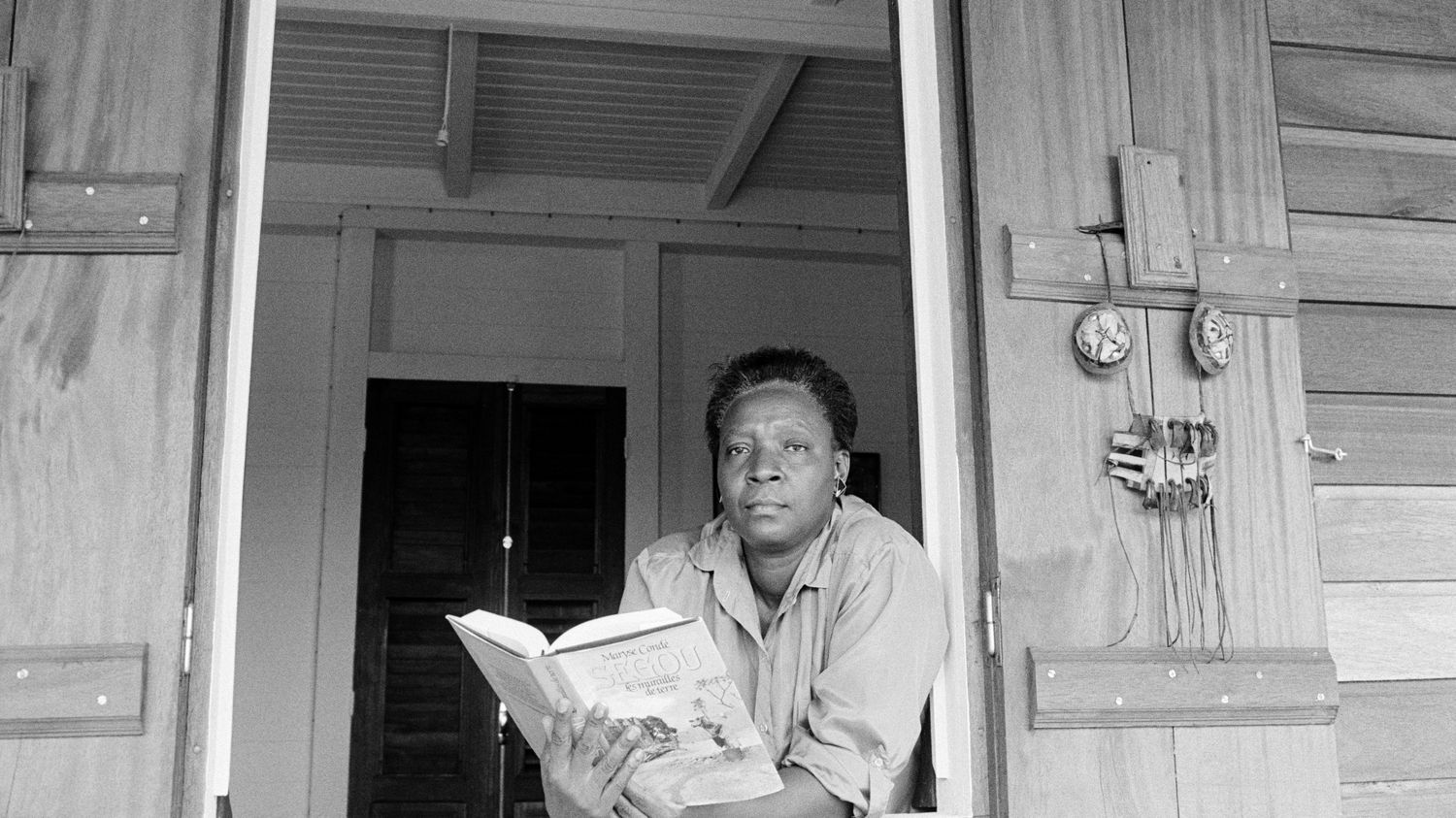An activist for memory and anti-colonialism, Maryse Condé is the author of more than 70 works. From plays to essays, fiction and children’s books, his writings are inspired by his journey and his struggles. A look back at seven committed and intimate stories.
Published
Reading time: 4 min

For several years, the name of Maryse Condé has been mentioned among those of the contenders for the Nobel Prize for Literature. The Guadeloupean author, who died on the night of April 1 to 2, 2024, leaves behind a work in which she describes the ravages of colonialism and the chaos of postcolonialism. The Franceinfo Culture editorial staff has selected seven stories which recount the commitments and journey of a major French-speaking writer.
“Ségou” (1984): the decline of a kingdom in pre-colonial Africa
Segou is Maryse Condé’s first great literary success. The work, built around the noble family of Dousika Traoré, describes the slow decline of the Bambara kingdom of Ségou which extended, since the end of the 17th century, over a large part of present-day Mali. The author recounts slavery, the arrival of Europeans and the development of Islam and recounts the traditions of the polytheist and animist people of the Bambaras, from ancestor worship to ritual sacrifices. This two-volume saga explores the grandeur and wealth of a people of pre-colonial Africa.
“Ségou, volume 1: The Walls of the Earth” and “Ségou, volume 2: The Earth in crumbs” by Maryse Condé (Pocket, 504 and 448 pages, 9.20 euros and 8.60 euros).
“I, Tituba witch…” (1984): colonial history and witch hunt
In February 1692, a series of witchcraft trials opened in Salem, a village in Massachusetts. More than 140 women and men were tried, twenty of them executed. The novel by Maryse Condé – originally titled I, Tituba black witch of Salem – delves into this episode of the colonial history of the United States by imagining the life of Tituba, young slave of the pastor of Salem, then accused of being a witch. Through this historical fiction, the Guadeloupean author rehabilitates Tituba and rescues her from the oblivion to which the dominant stories had her. condemned. The English version of the work is accompanied by a preface by Angela Davis.
“I, Tituba witch…” by Maryse Condé (Gallimard Folio collection, 288 pages, 9.40 euros).
“La Vie sans fards” (2012): an author without fiction
“Here is perhaps the most universal of my books”, declared Maryse Condé during the release of her autobiography Unvarnished Life. True “attempt to speak the truth”, the Guadeloupean author recounts her years in Africa discovering her identity, the birth of her vocation as a writer and her doubts about motherhood. But if Maryse Condé considered this book to be universal, it is because her experiences carry general reflections, those of women struggling with the difficulties of life, those of a person “seeking to realize oneself fully”. There English version of the work is accompanied by a preface by Angela Davis.
“La Vie sans fards” by Maryse Condé (Pocket, 288 pages, 7.70 euros).
“Dishes and wonders”: cuisine and literature as pleasures of language (2015)
“When I receive guests for the first time, while arranging the food on the table, I venture a joke, always the same: “You’re going to like it! I’m not sure I’m a good novelist, but I’m sure I’m an excellent cook. Nobody ever laughs. It’s because deep down my guests are shocked: how did she have the audacity to bring together literature and cuisine.” These laughing words from Maryse Condé appear in the preface to Food and wonders, one of his last works. From the cooking of her childhood to the importance of taste in her works, Maryse Condé writes joyful indulgence and undeniably literary cuisine.
“Foods and wonders” by Maryse Condé (JC Lattès, 300 pages, 19 euros).
“Crossing the Mangrove” (1989): Guadeloupean society in a choral novel
Crossing the Mangrove is the story of one night. In the heart of the forest, several of them guard the body of a man about whom no one knows much. Despite the doubts that hover over his existence, the inhabitants of his new village pay him a last tribute. In this choral novel,These testimonies implicitly evoke the conflicts, contradictions and tensions that cross the territory. Maryse Condé forges personal stories that outline, beyond the intimate, current Guadeloupean society.
“Crossing the Mangrove” by Maryse Condé (Gallimard Folio collection, 256 pages, 9.40 euros).
“Bitter Dreams” (1991): Haiti told for young people
Bitter dreams was first published under the title Haiti Chéri. Often studied in CM2 classes, this novel is the first story that Maryse Condé intended for young people. The work evokes the living conditions in Haiti at the time when Jean-Claude Duvalier presided over the country. Maryse Condé narrates the journey of Rose-Aimée, a young girl from a poor family living in the Cape Town region and placed as a servant with a violent bourgeois family. The Guadeloupean author maintained a very strong link with Haiti, a country that she spoke of as the place “where negritude stood up for the first time”.
“Bitter Dreams” by Maryse Condé (Bayard Jeunesse, 90 pages, 6.90 euros).
“The Gospel of the New World” (2021): biblical story and testament
Maryse Condé announced in 2017 that her novel The Fabulous and Sad Fate of Ivan and Ivana would be his last work. Three years after winning the alternative Nobel Prize for literature, the author published The Gospel of the New World, his true last story. Like a farewell, this novel explores Guadeloupean society through a rewriting of the Bible. Maryse Condé delivers an ode to fraternity and love, a passage through Genesis to write hope and the future.
“The Gospel of the New World” by Maryse Condé (Buchet-Chastel, 288 pages, 8.30 euros).
